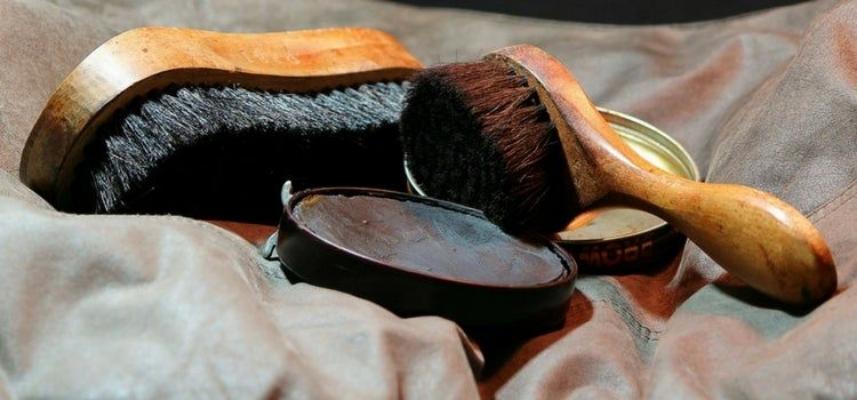One kind of saddle, a rough-out saddle, has the leather’s underside turned into the saddle’s outer surface for increased traction and grip. Care for a rough-out saddle differs from that of a smooth-out saddle; the former needs more work to keep looking good and functioning properly.
A rough-out saddle requires special care and attention to keep it in good condition. The first step in protecting leather against the buildup of dirt, sweat, and other particles is to clean it regularly. Further degradation can be averted by avoiding the growth of mould and mildew by maintaining a clean saddle.
The Properties Of Rough-Out Leather:
One variety of leather is known as “rough-out” because its exterior surface is made from the flesh side, or underside, of the hide. The end effect is a rough, napped finish that looks like suede. Popular for saddles and other products that require stable sitting, the rough side of the leather enhances grip and traction.
Furthermore, when contrasted with smooth leather, rough-out leather is often more long-lasting and resilient to damage.
Many Varieties Of Rough-Out Saddles Are In Use Today, Including:

Sturdy and long-lasting, ranch saddles are perfect for the rough and tumble of daily ranch operations.
Reinforced rigging and a deep seat provide stability to rope saddles specifically designed for roping cattle.
Saddles designed for lengthy trips with the rider’s comfort in mind sometimes have padded seats and additional D-rings for gear attachment.
The Importance Of Extra Care For Rough-Out Saddles:
As a result of the leather’s inherent characteristics and prolonged exposure to the elements, rough-out saddles demand extra attention. Because of its rougher texture, rough-out leather is more likely to absorb liquids like perspiration and dirt than smooth leather, making it more susceptible to wear and tear if not cared for correctly.
Also, rough-out saddles are more likely to get scratches, stains, and other defects from harsh handling while riding. Thus, to keep a rough-out saddle looking good and lasting a long time, it is vital to clean and condition it often.
Cleaning Techniques:

Collecting Required Materials:
Get everything you need to clean your rough-out saddle before you begin. To clean the saddle, use a gentle brush or the brush attachment on your vacuum cleaner. Either tool will work well to remove loose dirt and debris.
Gentle Cleanser Or Soap For Leather:
Find a mild soap or leather cleanser that is pH-balanced and made for leather that is roughed out.
Graspy Towels Or Sponges:
When you want to apply conditioner or clean, use a gentle, lint-free sponge or cloth.
Conditioner For Leather:
To keep your rough-out leather in good condition, use a high-quality conditioner made for leather.
Water:
Always keep a supply of potable water available for use in washing down surfaces and diluting cleaning products.
There Are Some Techniques You Should Practice To Get The Saddle Ready To Be Cleaned:
Gently brush or hoover away any surface dust, dirt, or debris from the saddle to remove excess dirt and debris.
Find And Fix Any Problems Or Damage:
Look for scratches, stains, or worn spots that can indicate damage to the saddle. If you want to keep the cleaning process from doing more harm than good, fix any small problems or repairs first.
Step By Step Cleaning:

- First, give the saddle a good scrubbing or vacuuming to remove any loose dirt, dust, or debris from its surface. To preserve the leather’s condition, be careful not to rub too harshly.
- To make sure the cleanser is compatible and won’t cause any negative responses, test it on a small, hidden area before applying it to the whole saddle. Before you see any benefits, apply a tiny bit of cleaner to a hidden area of the saddle and wait a few minutes.
- After you’ve made sure the cleaner is safe to use, follow the manufacturer’s directions to apply it to the saddle. To clean leather, use a gentle cloth or sponge to rub the cleaner into the material. Pay special attention to spots where dirt or stains are apparent.
- Use a soft cloth or sponge to gently scrub the leather, being careful to target areas with particularly tough stains or buildup, after applying the cleaner. To preserve the leather’s fragile surface, refrain from applying harsh or abrasive agents.
- Using a clean, moist cloth, remove any surplus of cleaner and grime from the saddle’s surface after you’ve cleaned it well. To keep the saddle clean, rinse the cloth often.
- To condition the saddle properly, it must first be let to air dry entirely after washing. Because heat and sunshine can dry up leather, it’s best to keep the saddle out of direct sunlight to keep it from becoming brittle.
Preserving And Taking Care Of Leather:

How To Pick The Best Leather Wash:
Choose an excellent leather conditioner made for worn leather. To keep leather supple and protected, search for products that have nourishing elements like waxes and natural oils.
After the saddle has dried, use a gentle sponge or cloth to apply a dab of leather conditioner. Apply the conditioner to the leather in light, circular strokes, making sure to cover all areas.
After applying the conditioner, polish the leather by buffing it with a clean, dry cloth until it is soft and shiny. Polishing the leather with a soft cloth can remove the built-up conditioner and bring back its original shine.
Applying A Finish Or Sealant for Protection:
Think about protecting the saddle with a protective finish or specialized leather sealant for extra peace of mind. You can extend the life of your leather and reduce the frequency of cleaning with the help of these solutions by making them repel water, grime, and stains.
Tips On Keeping Your Rough-Out Saddle Clean:

Consistent Removal Of Debris And Dirt By Brushing:
After every use, make it a habit to brush off the saddle to remove any dust, grime, or debris. Keep surface pollutants from piling up by gently brushing them off or vacuuming them up.
How To Remove Stains And Spills Quickly:
You should use a gentle soap or leather cleanser along with a sponge or soft cloth to quickly clean your saddle if it gets dirty or stained. The sooner you take care of stains and spills, the less likely they are to set into the leather and make removal more of a challenge.
When not in use, keep the saddle in a cool, dry spot out of the reach of direct sunlight and away from any moisture. To keep dirt and dust out of the leather and to avoid scratches and other damage, use a saddle cover or protective case.
To keep your worn-out saddle soft and supple, condition it frequently with a high-quality leather conditioner to prevent it from drying out. To keep the leather looking good and functioning properly for a longer time, it is recommended to condition it regularly to avoid drying out and cracking.
FAQs:
How Might One Go About Cleaning A Saddle That Has Become Rough?
Dust and grime can be easily removed using a sturdy nylon brush. Even the saddle manufacturers have told us that wire brushes work well for this kind of cleaning. Rough-out leather can have its “fuzzy” appearance brought back with vigorous brushing. As anyone who has ever used an old rough-out saddle knows, the nap can become flat and look “shiny.”
Can I Use A Brush On Rough Out Leather?
Anyone who has ever used an old, rough worn saddle knows that the nap can flatten and look “shiny,” but by brushing it thoroughly, you can restore the “fuzzy” appearance of the leather.
Is Neatsfoot Oil Safe To Put On Saddles?
Make sure your saddle is completely dry and that all the oil has been absorbed before you “brush” the leather if you choose to use the “rough side” of Neatsfoot oil; we’ll go over this procedure later on. Dust and grime can be easily removed using a sturdy nylon brush. Even the saddle manufacturers have told us that wire brushes work well for this kind of cleaning.
Conclusion:
To sum up, a rough-out saddle can only retain its good looks and useful life with regular cleaning and care. You can extend the life of your saddle and ensure it remains clean and supple by following the instructions here. Always keep the saddle brushed off, wipe up any spills or stains quickly, put it away correctly when not in use, and condition the leather every so often to keep it from drying out. If you take good care of your rough-out saddle, it will last for many years and give your horse the protection it needs.

